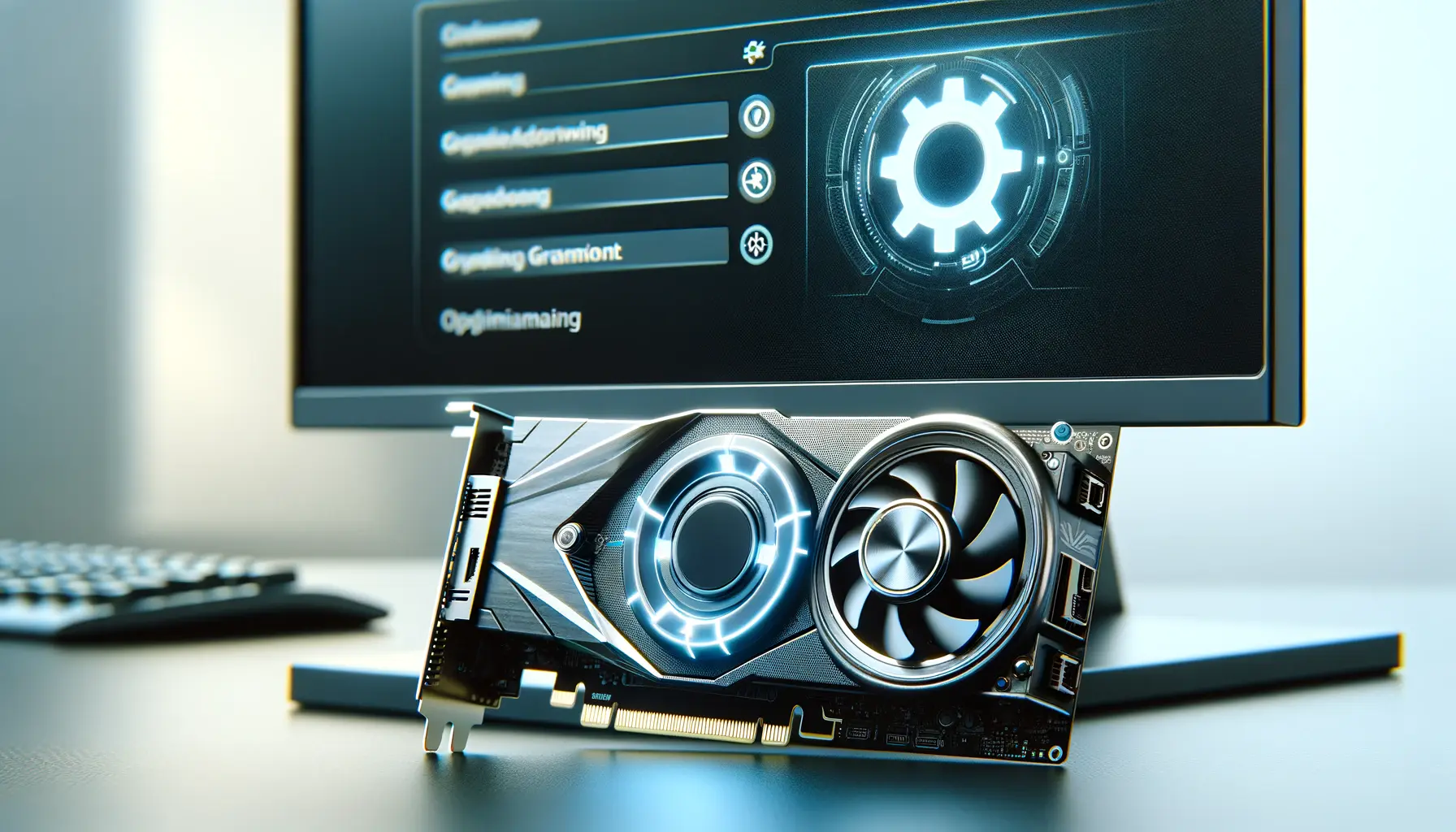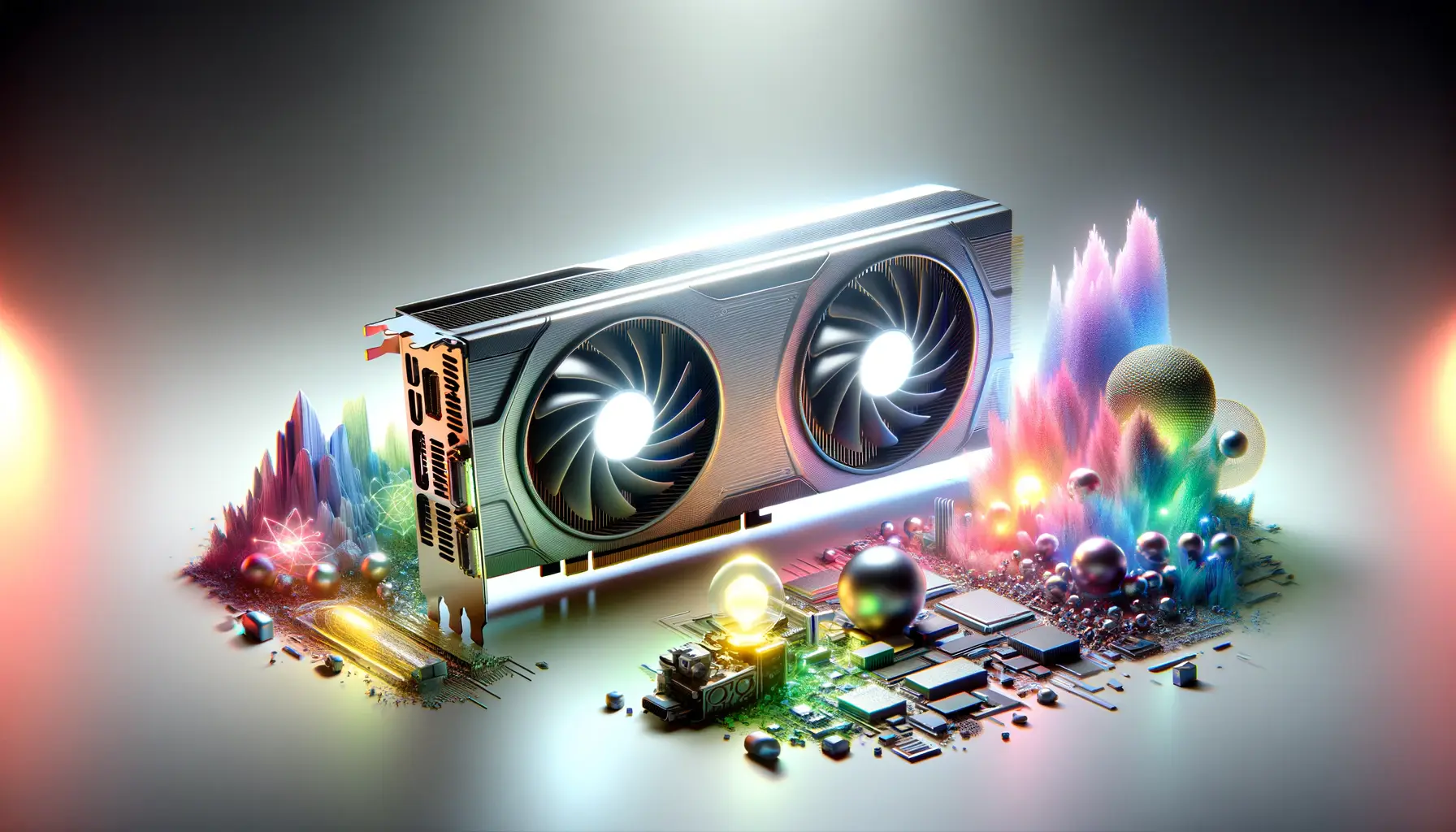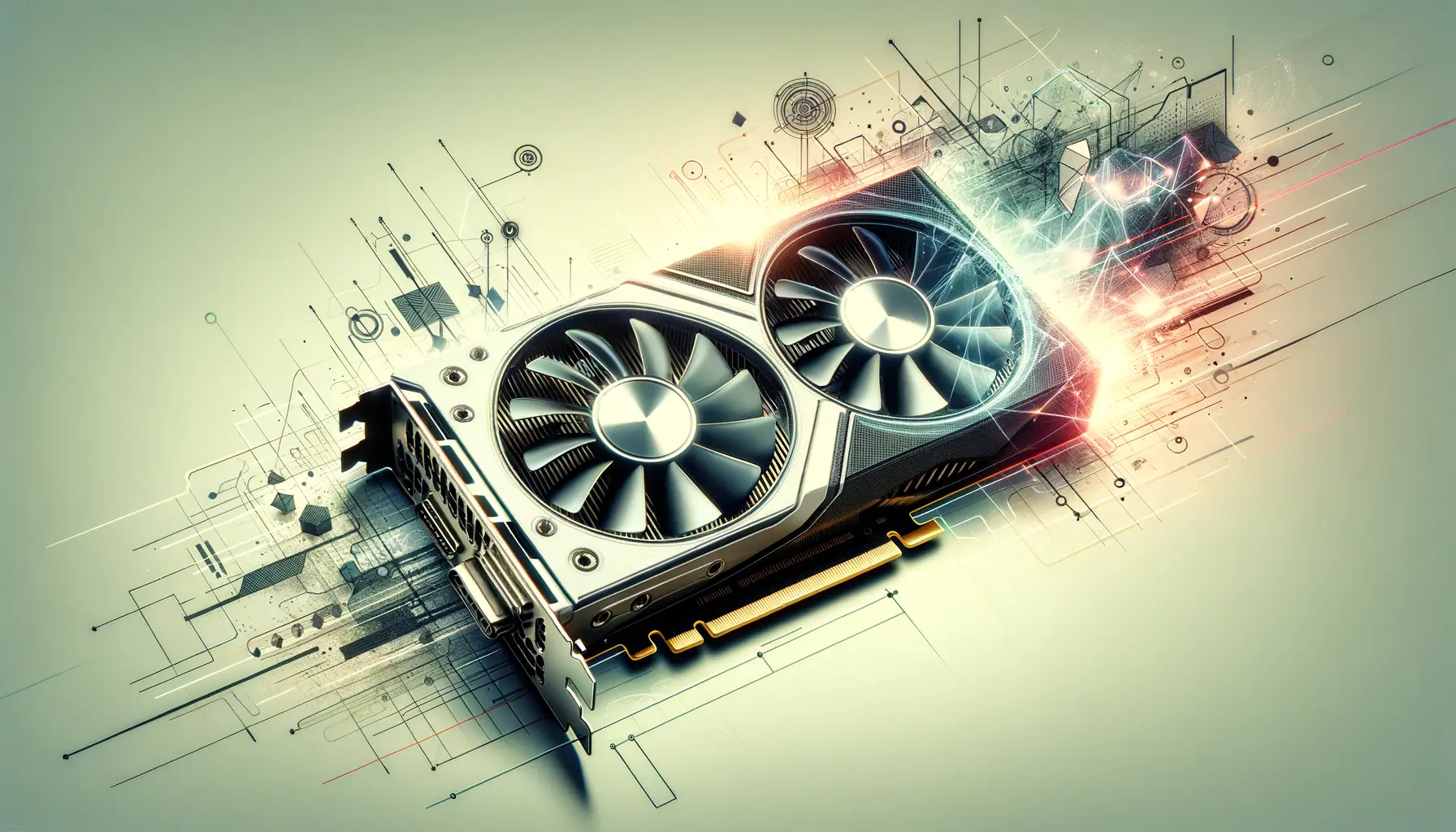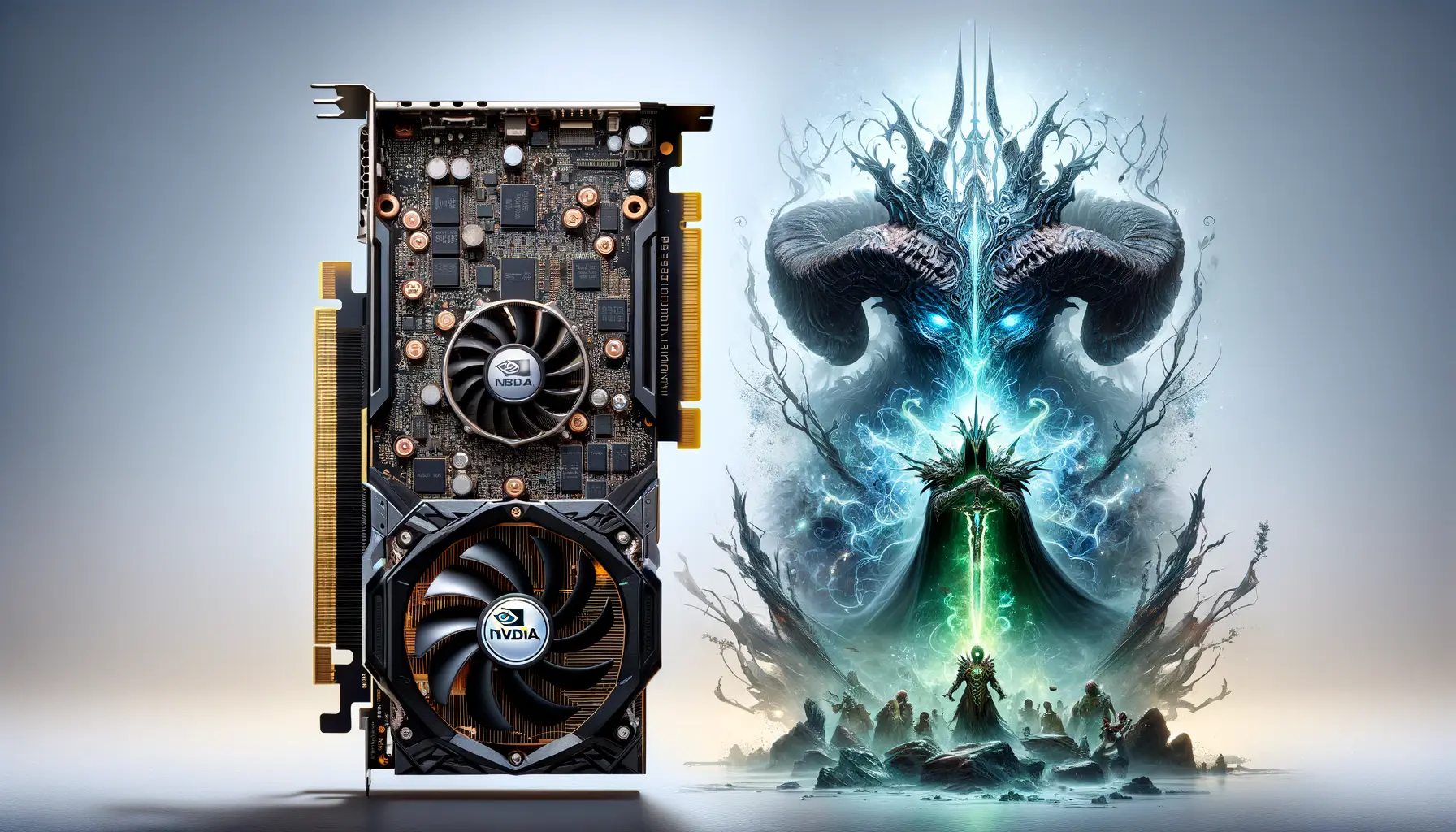In the realm of gaming and graphical fidelity, NVIDIA’s Deep Learning Super Sampling (DLSS) technology has been a game-changer, particularly with its latest iteration, DLSS 3.
This innovative technology not only enhances image quality but also boosts gaming performance, making it a pivotal advancement in the world of video games and graphics-intensive applications.
DLSS 3, with its frame generation capability, represents a significant leap forward, offering a glimpse into the future of real-time rendering and gaming experiences.
At its core, DLSS 3 utilizes advanced AI algorithms to generate additional frames in a sequence, effectively increasing the frame rate and making games run smoother without compromising on graphical quality.
This process, known as frame generation, is particularly beneficial in bridging the gap between high-resolution gaming and the hardware limitations of current-generation graphics cards.
By understanding how DLSS 3’s frame generation works, gamers and developers alike can appreciate the intricate balance between performance and visual fidelity that this technology brings to the table.
- Introduction to DLSS 3 and Frame Generation
- How DLSS 3 Enhances Gaming Performance
- DLSS 3’s Frame Generation vs. Traditional Rendering
- Compatibility and Requirements for DLSS 3
- Optimizing Settings for DLSS 3
- The Future of Gaming with DLSS 3
- Exploring DLSS 3 in Esports and Competitive Gaming
- Embracing the Future with DLSS 3’s Frame Generation
- DLSS 3 Frame Generation FAQs
Introduction to DLSS 3 and Frame Generation
What is DLSS 3?
Deep Learning Super Sampling (DLSS) 3 is NVIDIA’s latest innovation, designed to push the boundaries of gaming performance and visual quality.
Unlike its predecessors, DLSS 3 introduces a groundbreaking feature: AI-powered frame generation.
This technology leverages neural networks to predict and insert new frames between existing ones, effectively doubling or even tripling the perceived frame rate.
The result is a smoother, more immersive gaming experience, even on hardware that would typically struggle to maintain high frame rates at ultra settings.
The magic behind DLSS 3’s frame generation lies in its use of NVIDIA’s dedicated AI processors, known as Tensor Cores, found in RTX series graphics cards.
These cores are specifically designed to handle the complex calculations required for AI and machine learning tasks, allowing DLSS 3 to generate additional frames with minimal impact on overall system performance.
The Impact of Frame Generation on Gaming
Frame generation, as introduced by DLSS 3, marks a significant milestone in gaming technology.
By artificially increasing the frame rate, games not only look smoother but also feel more responsive to input.
This is particularly beneficial in fast-paced genres such as first-person shooters, racing, and competitive esports titles, where every millisecond of response time counts.
Moreover, the ability to maintain high frame rates without sacrificing resolution or graphical details means that gamers no longer have to choose between performance and visual quality.
Another notable impact of DLSS 3’s frame generation is on game development.
Developers can now create more graphically intensive scenes, knowing that DLSS 3 can help maintain a fluid gaming experience on a wider range of hardware.
This opens up new possibilities for game design, allowing for richer, more detailed game worlds without the traditional limitations imposed by hardware capabilities.
DLSS 3’s frame generation is a revolutionary step forward, blending AI with graphics rendering to elevate gaming experiences to new heights.
How DLSS 3 Enhances Gaming Performance
The introduction of DLSS 3 by NVIDIA has been a watershed moment for gaming technology, offering unprecedented improvements in both performance and image quality.
At the heart of these advancements is the frame generation technology, which not only smooths out gameplay but also significantly boosts frame rates.
This section delves into the mechanics of DLSS 3 and its profound impact on gaming performance.
Understanding the Technology Behind DLSS 3
DLSS 3’s frame generation technology is a complex interplay of AI and graphics rendering.
It operates by analyzing consecutive frames of a game, predicting the next frame, and then inserting a new, AI-generated frame between them.
This process involves several key steps:
- Frame Analysis: DLSS 3 analyzes two consecutive frames to understand the motion and changes occurring in the scene.
- AI Prediction: Using a deep learning model, it predicts what the intermediate frame should look like based on the motion observed.
- Frame Insertion: The AI-generated frame is inserted between the original frames, effectively increasing the frame rate.
This method allows DLSS 3 to boost gaming performance by increasing the number of frames displayed per second, leading to smoother animations and a more responsive gaming experience.
Performance Benefits in Various Gaming Genres
The benefits of DLSS 3’s frame generation extend across various gaming genres, each benefiting in unique ways:
- Action and FPS Games: For fast-paced games, the increased frame rate translates to smoother motion and quicker response times, giving players a competitive edge.
- Open-World Games: These games benefit from enhanced visual fidelity and smoother transitions, making expansive game worlds more immersive and realistic.
- Simulation and Strategy Games: While these genres may not require high frame rates, the improved performance allows for more complex simulations and detailed environments without compromising on speed.
The versatility of DLSS 3’s frame generation means it can adapt to the specific needs of different gaming genres, enhancing the overall gaming experience regardless of the type of game.
DLSS 3’s Frame Generation vs. Traditional Rendering
The advent of DLSS 3’s frame generation represents a significant departure from traditional rendering methods.
Traditional rendering, while effective, often requires a compromise between performance and image quality, especially in real-time applications like video games.
DLSS 3’s frame generation, on the other hand, offers a novel solution that enhances both without the need for such compromises.
This section explores the differences between DLSS 3’s frame generation and traditional rendering techniques, highlighting the advantages and innovations brought by NVIDIA’s technology.
Traditional rendering techniques, such as rasterization and ray tracing, have been the cornerstone of graphics processing for decades.
Rasterization efficiently converts 3D models into 2D images but can struggle with complex lighting and shadows.
Ray tracing offers more realistic lighting by simulating the physical behavior of light, but at a significant performance cost.
Both methods render each frame independently, which can limit frame rates and overall smoothness in graphically intensive scenes.
Advantages of DLSS 3 Over Traditional Methods
- Increased Frame Rates: By generating intermediate frames, DLSS 3 effectively increases the frame rate, leading to smoother gameplay without the need for more powerful hardware.
- Enhanced Image Quality: DLSS 3 improves upon traditional anti-aliasing and image sharpening techniques, offering clearer and more detailed images.
- Reduced Hardware Load: By leveraging AI to generate frames, DLSS 3 reduces the load on the GPU, allowing for higher settings or resolutions without compromising performance.
These advantages make DLSS 3 a transformative technology in the gaming industry, offering a glimpse into the future of real-time rendering.
The ability to maintain high frame rates while also improving image quality represents a significant leap forward, setting a new standard for what gamers can expect from their gaming experiences.
The innovation of DLSS 3’s frame generation technology not only challenges traditional rendering methods but also redefines the possibilities for game developers and players alike, ushering in a new era of graphical performance and quality.
Compatibility and Requirements for DLSS 3
NVIDIA’s DLSS 3 technology, with its revolutionary frame generation feature, is not universally compatible with all gaming setups.
It requires specific hardware and software conditions to function, limiting its availability to a subset of the gaming community.
Understanding these requirements is crucial for gamers looking to leverage DLSS 3’s benefits.
At the core of DLSS 3’s requirements is the need for NVIDIA RTX series graphics cards, specifically those built on the Ada Lovelace architecture.
These GPUs are equipped with the necessary Tensor Cores and AI capabilities to perform the complex calculations required for frame generation.
Additionally, game developers must integrate DLSS 3 support into their titles, a process that involves collaboration with NVIDIA.
Hardware and Software Requirements
- NVIDIA RTX Graphics Cards: Only the latest RTX GPUs support DLSS 3, as they contain the specialized hardware needed for AI-driven frame generation.
- Game Support: Games must be specifically updated or designed to utilize DLSS 3, meaning not all titles will benefit from this technology.
- Driver and Software Updates: Gamers must ensure their system’s drivers and NVIDIA’s software are up to date to access DLSS 3 features.
These requirements highlight the exclusivity of DLSS 3, as only a fraction of the gaming community currently has access to the necessary hardware and software.
However, for those who do meet these criteria, DLSS 3 offers a significant enhancement to gaming performance and visual quality.
Future Expansion and Accessibility
NVIDIA is actively working to expand the accessibility of DLSS 3 by partnering with game developers and optimizing its technology for broader hardware support.
Future iterations of GPUs and gaming consoles may include support for DLSS-like technologies, potentially making frame generation a standard feature in video games.
Additionally, as more game developers integrate DLSS 3 into their titles, the library of compatible games will grow, increasing the technology’s value to gamers.
The current limitations on compatibility and requirements for DLSS 3 underscore the technology’s cutting-edge nature but also suggest a roadmap for wider adoption in the future, promising an exciting evolution of gaming performance and quality.
Optimizing Settings for DLSS 3
Maximizing the benefits of DLSS 3’s frame generation requires more than just compatible hardware and software; it also demands careful optimization of settings.
Both NVIDIA’s control panel and in-game options play crucial roles in fine-tuning DLSS 3’s performance.
This optimization ensures that gamers can enjoy the perfect balance between image quality and frame rate, tailored to their specific preferences and system capabilities.
Understanding the various DLSS 3 settings and how they impact game performance and visual fidelity is key.
These settings range from resolution scaling options to the level of detail in generated frames.
By adjusting these parameters, players can significantly enhance their gaming experience, making games look and run better than ever before.
Key Settings to Adjust for DLSS 3
- DLSS Mode: DLSS 3 offers different modes, such as Quality, Balanced, Performance, and Ultra Performance. Each mode represents a trade-off between image quality and frame rate.
- Resolution Scaling: Adjusting the base resolution before DLSS upscaling can impact performance and visual clarity. Lower base resolutions increase performance at the cost of some image quality.
- Sharpness: DLSS 3 includes a sharpness filter that can be adjusted to enhance image clarity, particularly useful in lower resolution settings.
By tweaking these settings, gamers can find the optimal configuration that suits their system’s strengths and their personal preferences.
This customization is one of DLSS 3’s greatest strengths, allowing for a highly personalized gaming experience.
Tips for Achieving the Best Balance
Finding the right balance between performance and image quality with DLSS 3 involves experimentation and understanding one’s preferences.
Here are some tips to get started:
- Start with the Quality mode and adjust downwards if performance is insufficient. Quality mode often provides the best balance for most systems.
- Use the sharpness filter sparingly. Overuse can lead to unnatural-looking images, especially in games with a lot of fine detail.
- Monitor performance using in-game tools or third-party software to understand the impact of different settings.
Optimizing DLSS 3 settings is a dynamic process that can significantly enhance gaming experiences, making it well worth the effort for those with compatible systems.
The Future of Gaming with DLSS 3
The introduction of DLSS 3 and its frame generation technology marks a pivotal moment in the evolution of gaming graphics and performance.
As we look to the future, the potential applications and improvements of this technology paint an exciting picture for gamers and developers alike.
The continuous advancements in AI and machine learning promise to further enhance DLSS 3, making it even more integral to the gaming experience.
As DLSS 3 becomes more widespread, its impact on game development and player expectations will undoubtedly grow.
The ability to deliver high frame rates without sacrificing visual quality could change the way games are designed, allowing for more detailed and expansive game worlds.
Moreover, the technology’s efficiency could make high-end gaming more accessible, bridging the gap between mid-range systems and the most demanding titles.
Anticipated Developments in DLSS Technology
- Broader Hardware Support: Future iterations of DLSS may extend compatibility to a wider range of hardware, including older GPU models and potentially even gaming consoles.
- Improved AI Models: Ongoing training of the AI models used in DLSS 3 could lead to even more accurate frame generation, reducing artifacts and enhancing visual fidelity.
- Integration with Other Technologies: DLSS 3 could be combined with other emerging technologies, such as ray tracing, to create even more immersive gaming experiences.
The potential for DLSS 3 to revolutionize gaming extends beyond just performance improvements.
As the technology matures, it could also influence game design, enabling developers to create more complex and visually stunning games without worrying about alienating players with less powerful hardware.
Shaping Player Expectations
The widespread adoption of DLSS 3 will likely raise players’ expectations for game performance and visual quality.
Gamers will come to expect smooth, high-frame-rate experiences as a standard, even in the most graphically intensive titles.
This shift could pressure developers and hardware manufacturers to prioritize support for DLSS 3 and similar technologies, ensuring that the gaming industry continues to push the boundaries of what’s possible.
The future of gaming with DLSS 3 is not just about improving performance but also about redefining the possibilities of game development and enhancing the overall gaming experience for players around the world.
Exploring DLSS 3 in Esports and Competitive Gaming
The impact of NVIDIA’s DLSS 3 technology extends beyond the realm of casual gaming into the competitive and esports arenas.
In these high-stakes environments, where every frame and millisecond can influence the outcome of a match, DLSS 3’s frame generation offers a significant advantage.
This section explores how DLSS 3 is set to revolutionize esports and competitive gaming by providing smoother gameplay and enhanced visual clarity without compromising performance.
Competitive gamers constantly seek ways to improve their reaction times and overall gameplay experience.
DLSS 3, with its ability to increase frame rates significantly while maintaining high image quality, fits perfectly into this quest for optimization.
The technology’s benefits in these settings are multifaceted, impacting not only the players but also the spectators and the broader esports ecosystem.
Benefits for Competitive Players
- Enhanced Reaction Times: Higher frame rates lead to smoother animations, allowing players to react more quickly to in-game events.
- Visual Clarity: DLSS 3 improves image quality, making it easier for players to spot enemies and important details, even in fast-paced scenarios.
- System Efficiency: By reducing the load on the GPU, DLSS 3 allows for cooler and quieter system operation, which can be crucial in long gaming sessions.
For competitive gamers, these advantages can translate into tangible improvements in performance, potentially tipping the scales in their favor during crucial moments.
Impact on Esports Tournaments and Broadcasting
DLSS 3’s influence also extends to the production and broadcasting of esports events.
Higher frame rates and improved visual quality make for a more engaging and enjoyable viewing experience.
Spectators can appreciate the nuances of high-level play in greater detail, from the subtle movements of players to the dynamic effects of in-game actions.
Furthermore, the technology’s efficiency can reduce the hardware requirements for streaming and broadcasting, making high-quality production more accessible to tournament organizers.
As DLSS 3 becomes more prevalent in competitive gaming rigs and esports tournaments, it could set a new standard for performance and visual quality in the industry.
This shift would not only elevate the competitive gaming experience but also enhance the global appeal of esports as a spectator sport.
DLSS 3’s frame generation technology is poised to make a significant impact on esports and competitive gaming, offering benefits that extend from the individual player level to the broader spectator experience.
Embracing the Future with DLSS 3’s Frame Generation
The journey through the intricacies of DLSS 3’s frame generation technology reveals a future where the lines between virtual and reality blur further.
NVIDIA’s pioneering technology not only enhances the gaming experience through smoother frame rates and improved visual fidelity but also redefines what gamers and developers can expect from future titles.
As we stand on the brink of this new era, it’s clear that DLSS 3 is more than just an incremental upgrade; it’s a transformative force in gaming and graphics technology.
The Game-Changing Impact of DLSS 3
DLSS 3’s frame generation technology has set a new benchmark for performance and quality, offering a glimpse into the future of gaming that was once deemed unattainable.
The benefits of this technology extend across the entire spectrum of the gaming world, from casual titles to the most competitive esports arenas.
By leveraging advanced AI algorithms, DLSS 3 ensures that gamers no longer have to choose between high frame rates and visual quality, delivering the best of both worlds.
Key Takeaways from DLSS 3’s Evolution
- DLSS 3 represents a significant leap forward in rendering technology, utilizing AI to enhance gaming experiences like never before.
- The technology’s compatibility and optimization requirements underscore its cutting-edge nature, promising even greater advancements in the future.
- As DLSS 3 becomes more integrated into the gaming industry, it will likely influence not only how games are played but also how they are developed and presented to audiences worldwide.
In conclusion, DLSS 3’s frame generation is not just a milestone in NVIDIA’s technological achievements; it’s a beacon for the future of gaming.
As this technology continues to evolve and become more accessible, it will undoubtedly shape the landscapes of game design, competitive gaming, and player expectations.
The era of DLSS 3 is just beginning, and its full potential is yet to be realized.
What remains clear, however, is that the future of gaming looks brighter, smoother, and more realistic than ever before.
DLSS 3 Frame Generation FAQs
Explore the most common inquiries about DLSS 3’s frame generation technology to better understand its impact on gaming.
DLSS 3 Frame Generation is an NVIDIA technology that increases frame rates by generating intermediate frames through AI, enhancing gaming performance.
By generating additional frames, DLSS 3 reduces the load on the GPU, allowing for smoother gameplay and higher frame rates without sacrificing quality.
No, DLSS 3 requires game developers to integrate support into their titles, so it’s only available in compatible games.
Yes, DLSS 3 is exclusive to NVIDIA RTX 40 series graphics cards, which are equipped with the necessary AI processing capabilities.
While DLSS 3 can work with any monitor, higher refresh rate monitors better showcase the smoothness improvements it offers.
DLSS 3 can be enabled from the game’s graphics settings menu, provided the game supports the technology and you have a compatible GPU.
DLSS 3 includes NVIDIA Reflex to minimize latency, ensuring responsive gameplay even with frame generation enabled.
NVIDIA continuously updates DLSS technology, so future improvements in AI models and algorithms are expected to enhance DLSS 3’s performance further.













